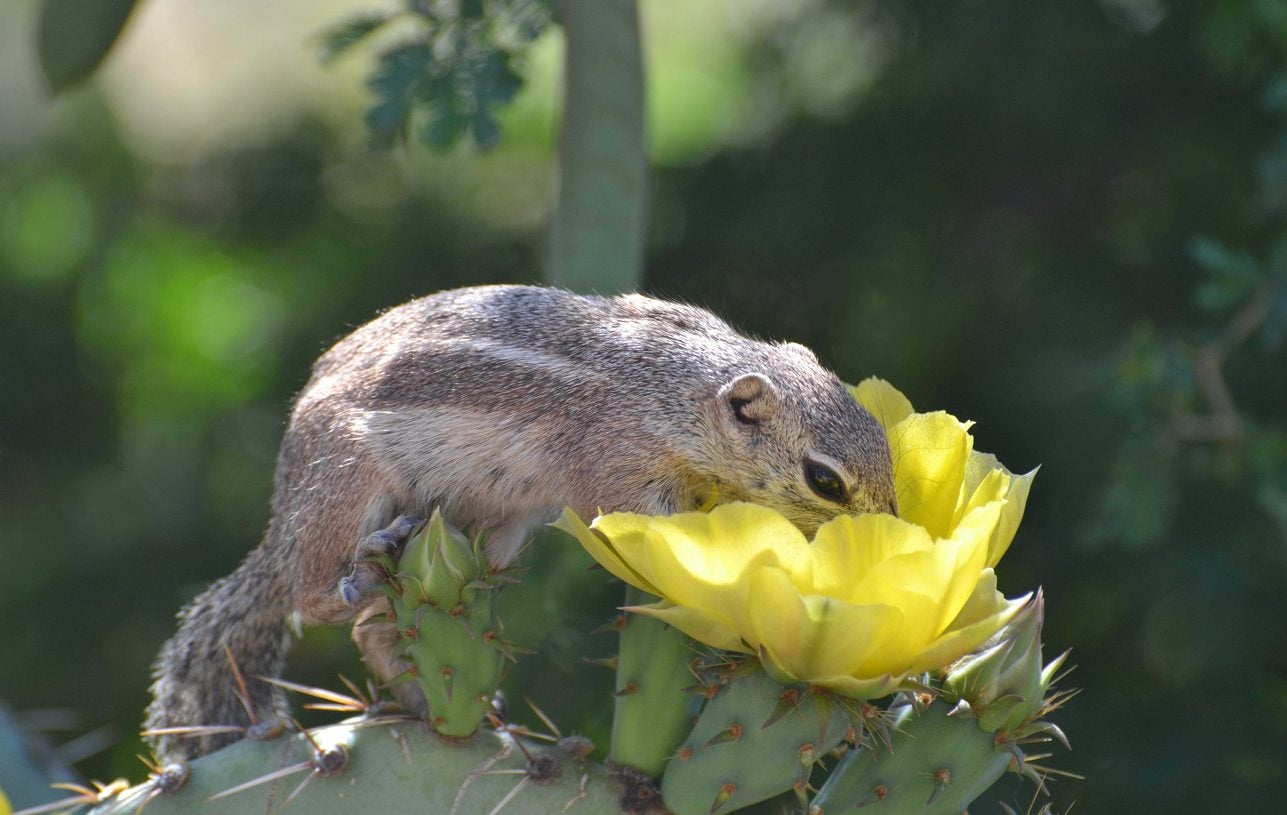Cactus Plant Protection – How To Keep Rodents Away From Cactus


Do mice eat cactus? Yes, they certainly do, and they enjoy every single bite. Cactus is a delicacy to a variety of rodents, including rats, gophers, and ground squirrels. It seems that prickly cactus would discourage rodents, but the thirsty critters are willing to brave the formidable spines to get to the sweet nectar hidden beneath, especially during periods of prolonged drought. For some gardeners, rodents feeding on cactus can become a serious problem. Poison is one option, but you take the risk of harming birds and wildlife. If you’re wondering how to keep rodents away from cactus, read on for a few suggestions.
How to Keep Rodents Away from Cactus
Some cacti are hardy plants that can survive an occasional nibble, but in many cases, rodents feeding on cactus can be deadly, so cactus plant protection is necessary. Here are a few tips for protecting cactus from rodents: Fencing: Surround your cactus with wire fencing. Bury the fencing at least 4 to 6 inches (10-15 cm.) into the soil to discourage rodents from digging under. Covers: If rodents are a problem at night, cover cacti every evening with a metal garbage can, bucket, or empty nursery container. Mint: Try surrounding your cacti with mint, as rodents don’t appreciate the powerful aroma. If you’re worried that mint may become too aggressive, place potted mint plants near your cactus. Pets: Cats are rodent-control experts, especially when it comes to eradicating mice and other small critters. Certain dogs, including Jack Russell Terriers, are also good at catching rodents and other vermin. Repellants: Some gardeners have good luck by surrounding cacti with the urine of predators such as wolves, foxes, or coyotes, which is available at most garden supply stores. Other repellants, such as hot pepper, garlic, or onion spray, seem to be temporary at best. Poison: Be extremely careful if you decide to use poison as a means of protecting cactus from rodents. Avoid poison at all costs if you have young children or pets, and keep in mind that poison can also kill birds and other wildlife. Lastly, remember that poisoned animals often seek shelter to die, which means they may breathe their last breath inside the walls of your home. Trapping: This, like poison, should be a last resort and doesn’t work as well as you might expect. Often, trapping an animal creates a vacuum that is quickly replaced by another animal (or several). Live traps may be an option but check with your Department of Fish and Wildlife first, as relocating rodents is illegal in many areas. (Consider your neighbors!)
Sign up for the Gardening Know How newsletter today and receive a free copy of our e-book "How to Grow Delicious Tomatoes".

A Credentialed Garden Writer, Mary H. Dyer was with Gardening Know How in the very beginning, publishing articles as early as 2007.